Besides creating a beautiful, untamed look, wildflowers often attract birds, bees, and butterflies. If you choose a few low-maintenance annuals for a wildflower mix, you’ll soon be enjoying bursts of color all season long.
A wildflower is any species that can survive on its own in the wild, whether it’s native to the region or has naturalized. You’ll find perennial wildflowers, like the coneflower or columbine, and annuals, like the lupine or poppy, as well as a few biennials.
It’s relatively cheap to buy a commercial wildflower seed mix. Although these mixes are convenient, watch out since they often contain a low proportion of actual seeds and may include invasive species. Instead of purchasing a premade mix, why not make your own?
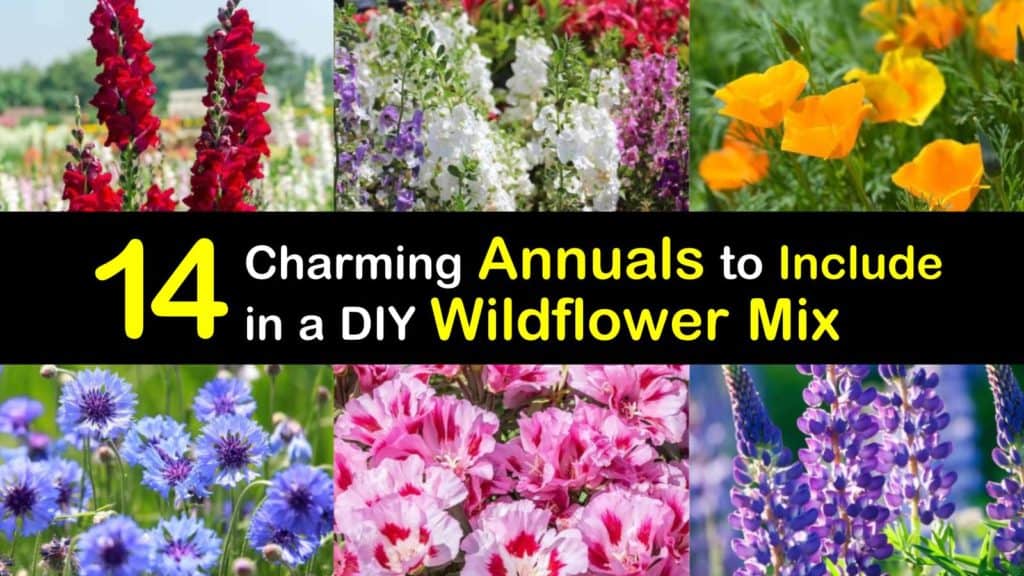
- Annuals for a Wildflower Garden
- How to Grow Wildflowers from Seed
- When to Plant Annuals for a Wildflower Mix
- Tickseed (Coreopsis)
- Indian Blanket (Gaillardia pulchella)
- Wood Forget-Me-Not (Myosotis sylvatica) – A Lovely Annual Wildflower
- Common Poppy (Papaver rhoeas)
- Cornflower (Centaurea cyanus)
- California Poppy (Eschscholzia californica) – A Vibrant Annual Wildflower
- Pot Marigold (Calendula officinalis)
- Snapdragon (Antirrhinum majus)
- Blue Gilia (Gilia capitata) – A Globular Annual Wildflower
- Lupine (Lupinus)
- Larkspur (Consolida ajacis)
- Garden Cosmos (Cosmos bipinnatus) – A Cheerful Annual Wildflower
- Black-Eyed Susan (Rudbeckia hirta)
- Clarkia (Clarkia)
Annuals for a Wildflower Garden
You can grow so many plants in your yard that it can be challenging to choose just a few. Whether you want to grow azaleas that bloom twice a year, trees that have bright fall colors, or perennials and annuals, making a plan can help.
Although wildflowers are easy to care for, planting them requires initial effort. Gather your desired seeds, then follow these steps to set your garden up for success.
How to Grow Wildflowers from Seed
Remove all weeds, till the soil shallowly, and rake it, creating grooves to catch the seeds. Add sand to the small seeds to make them easier to handle. Consider including grass seed to create a meadow look and fill in gaps.
Distribute the seed mix, then rake again to ensure the seeds are well-dispersed—mulch with straw, peat, or compost. Keep the area moist for a little while, then only water during dry spells.
Deadheading tends to encourage bloom production. Wildflowers often reseed, releasing seeds for the next growing season.
When to Plant Annuals for a Wildflower Mix
Sow seeds for annual wildflowers in the spring to give them as much time as possible to get settled and produce seeds. March is often a good month, depending on your region’s climate.
Starting seeds indoors may be appropriate if you have a short growing season. Consult the seed packet to see how far in advance they recommend sowing seeds indoors. Then, count backward from your region’s average last frost date.
Tickseed (Coreopsis)
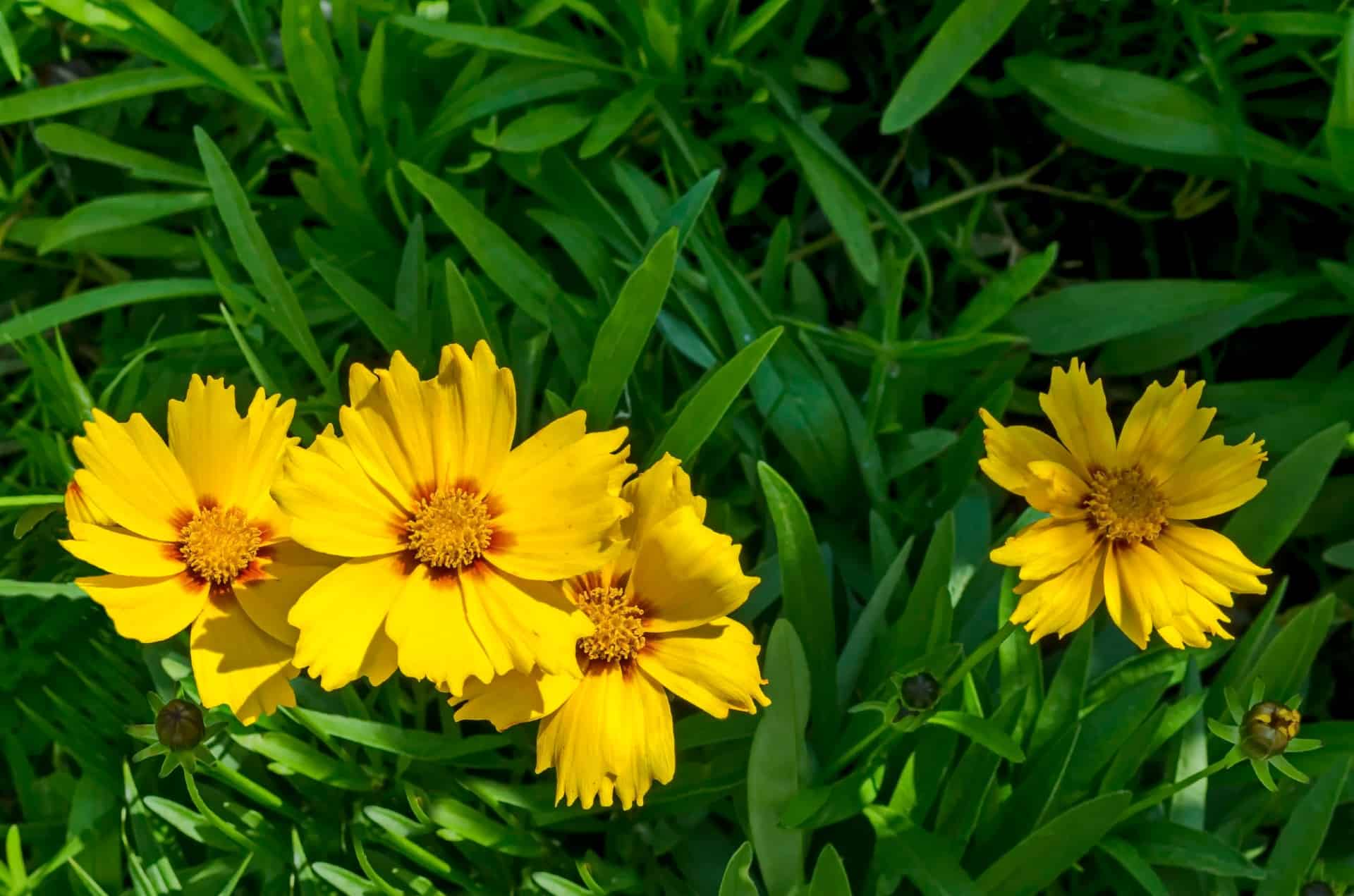
This wildflower exhibits yellow, pink, orange, or red flowers in the summer and intermittently in the fall. Only some varieties are annual. Tickseed flourishes as a border or filler plant.
Sow seeds inside six to eight weeks before the final frost, or sow them directly outdoors after the last frost. Pick a site with well-drained, sandy soil. These plants that thrive in full sun enjoy some afternoon shade in intense heat.

Give your coreopsis regular deep watering until it’s mature. Afterward, watering is less necessary but still beneficial. Spread compost in the spring, but do not add fertilizer.
Indian Blanket (Gaillardia pulchella)
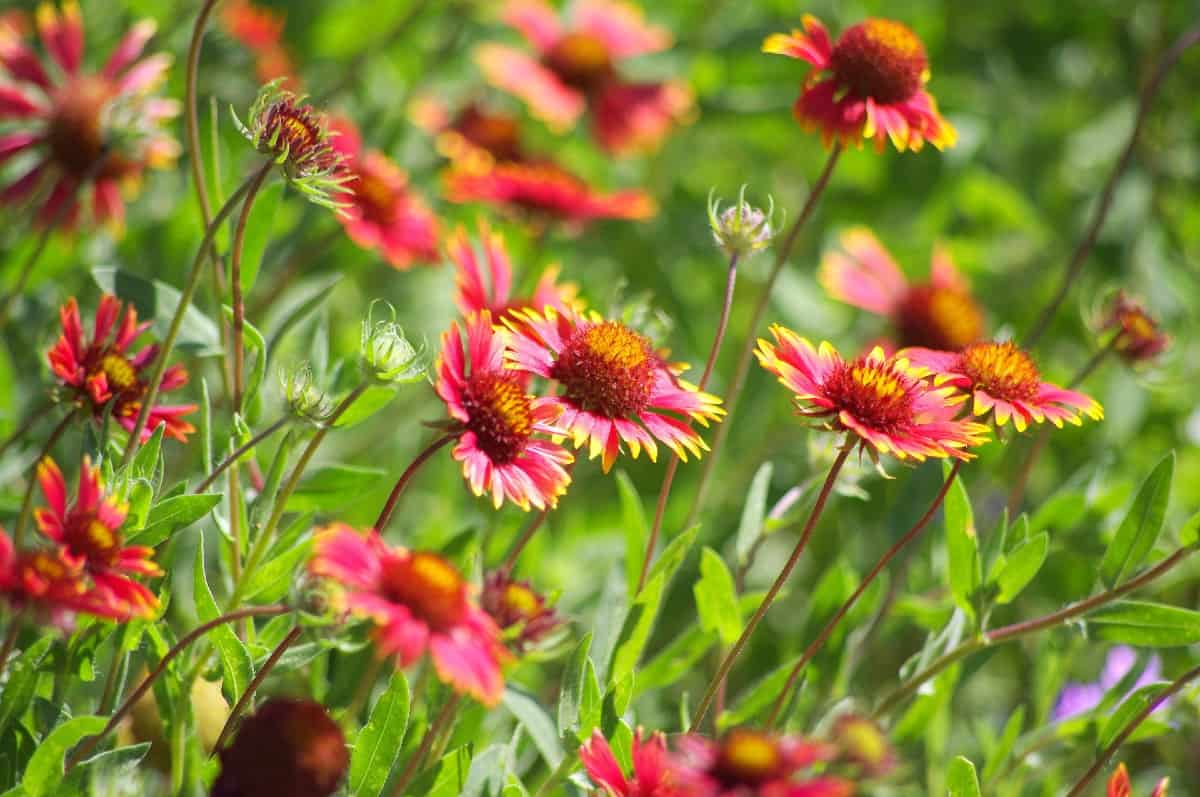
This hardy native wildflower displays daisy-like flowers from late spring to fall. Their yellow-tipped red rays radiate outward from a brownish-red disk.
Use Indian blanket in a bed, border, container, or rock garden. Grow these annuals flowers butterflies love from seed indoors four to six weeks before the last frost, or outdoors once there’s no frost risk.
Indian blanket does best in full sun and average, dry to medium-moisture, well-draining, sandy soil. It demands little to no fertilizer. Water frequently immediately after planting, then only in scorching, dry conditions.
Wood Forget-Me-Not (Myosotis sylvatica) – A Lovely Annual Wildflower
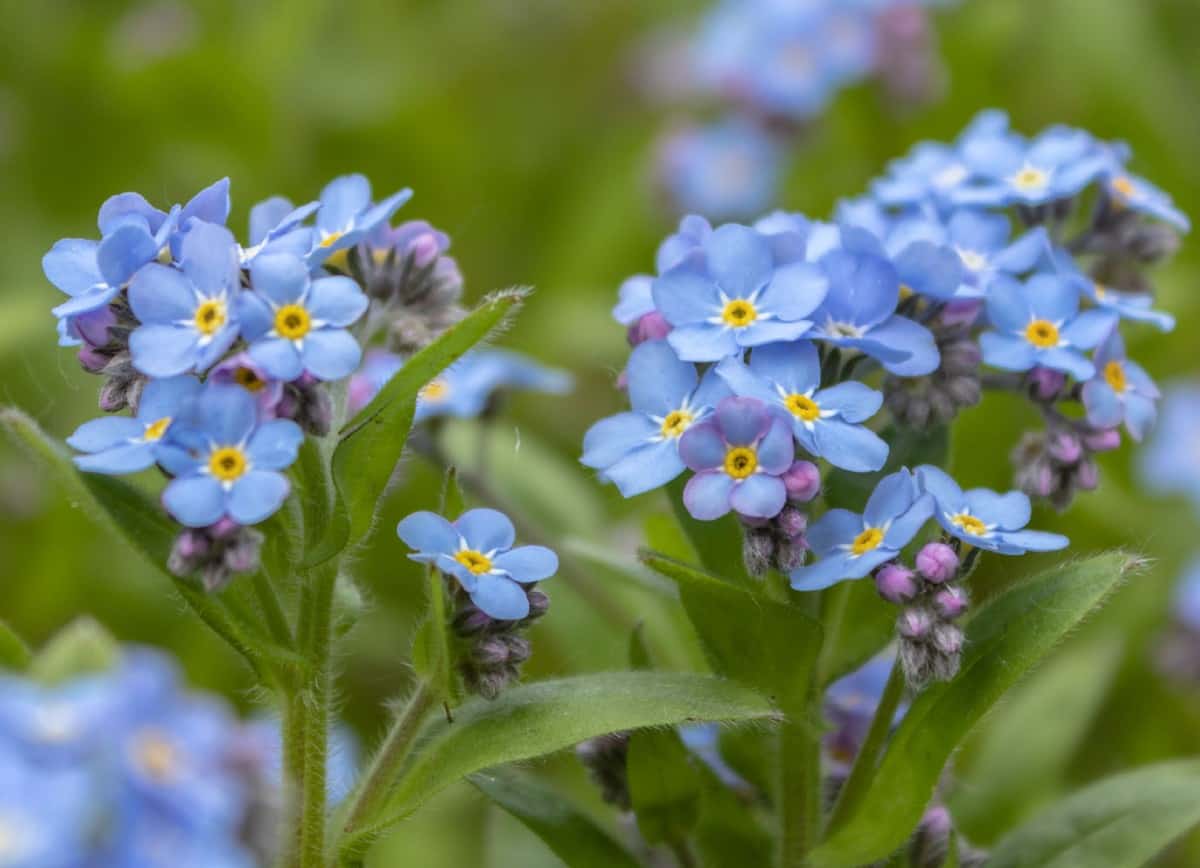
From April to May, this annual produces many small, blue blooms with white or yellow eyes. Note that forget-me-nots reseed and can be invasive, so deadhead regularly.
This species is biennial, but you may treat an already-flowering nursery plant as an annual. Use forget-me-nots as a ground cover or a container plant in a cottage, woodland, or rock garden.
They prefer full sun, or part shade in the South, and fertile, evenly moist, fast-draining soil. Water your plant regularly and apply compost or all-purpose fertilizer annually.
Common Poppy (Papaver rhoeas)
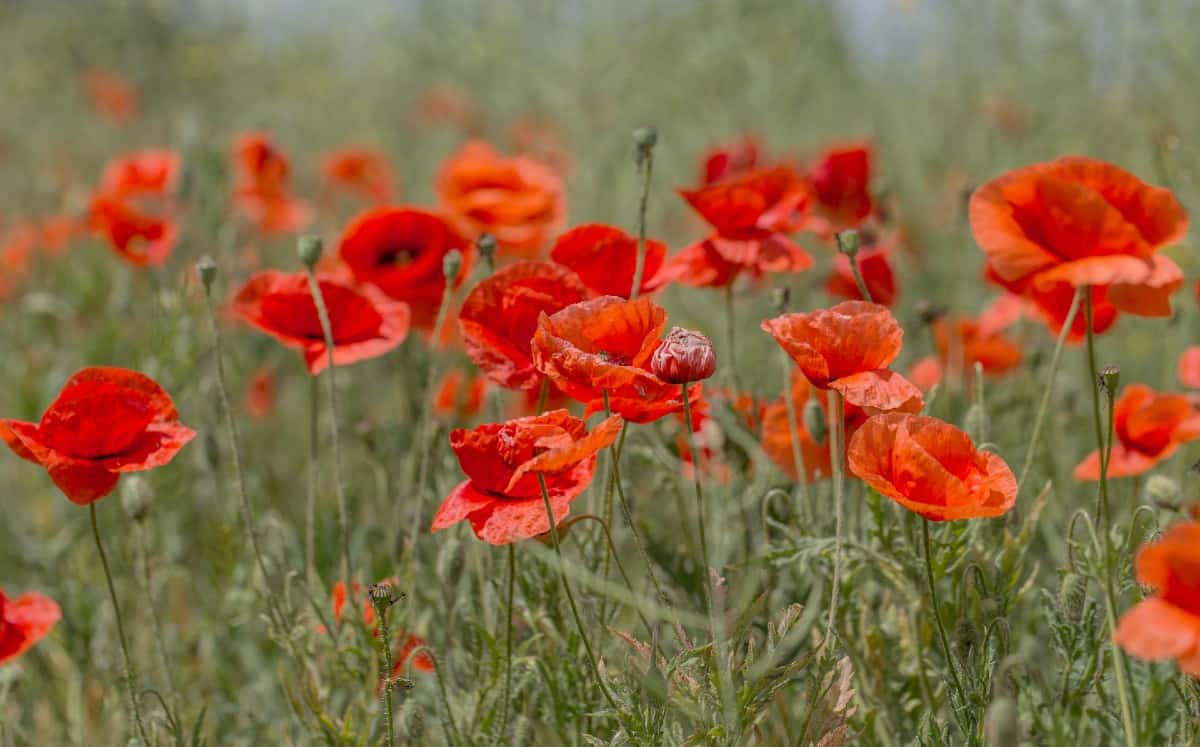
This well-known flower has rounded, overlapping petals that are usually scarlet but may be pink or white. The blooms appear between late spring and early summer, often with a dark blotch at their base, and make excellent cut flowers.
Use this plant in a meadow, cottage garden, bed, or border. Sow seeds in early spring—or early fall for late spring blooms—in full sun and fertile, well-drained soil.
Water your plant well until it’s settled, then give it the occasional soaking. Add phosphorus-rich fertilizer if the earth contains excessive nitrogen.
Cornflower (Centaurea cyanus)
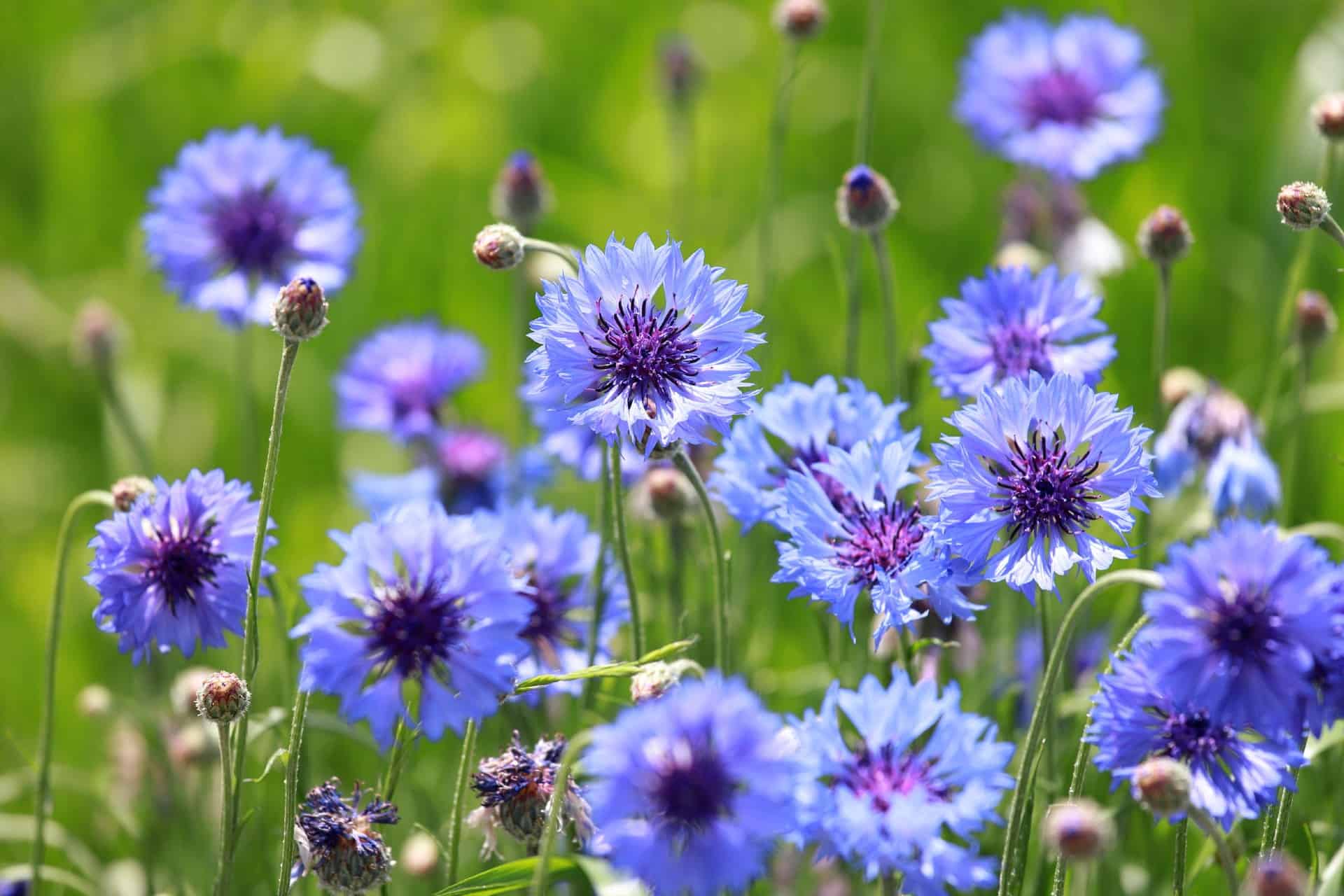
In late spring or early summer, this cold-hardy annual exhibits fringed bluish-lavender flowers. Since this plant grows upright, it’s well-suited for tight spaces. The cornflower also works well as a border or edging plant.
Sow its seeds from early to mid-spring for early summer blooms, or in the fall if winters are mild. Put it in full sun and average-quality soil that drains well.
Add balanced organic fertilizer before planting. Keep the soil moist until the plant germinates, then only water infrequently.
You can also dry this pretty posy for attractive everlastings flowers to enjoy all year.
California Poppy (Eschscholzia californica) – A Vibrant Annual Wildflower
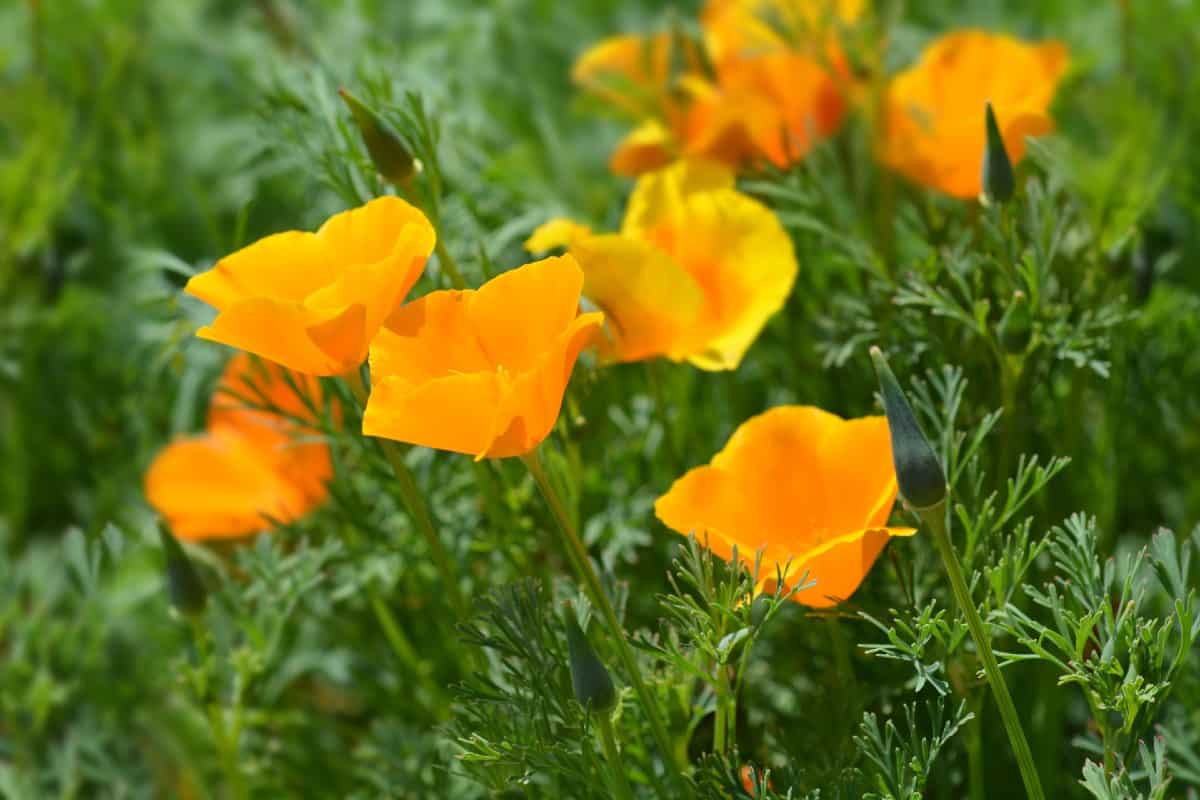
This hardy poppy acts as a fast-growing annual or tender perennial. It produces bright-orange, pink, or golden flowers in the spring that may persist during a cool summer. Note that all of the California poppy is toxic for humans and other animals.
This plant excels in flower beds, wildflower meadows, and containers. Once there’s no frost risk, press its seeds into the ground in a sunny site. Use well-draining, average- to poor-quality soil that’s not heavy clay.
This poppy needs very little water, surviving on irregular springtime rain. It often goes dormant during hot summers, in which case it does not require any water. Fertilizer is never necessary.
Pot Marigold (Calendula officinalis)
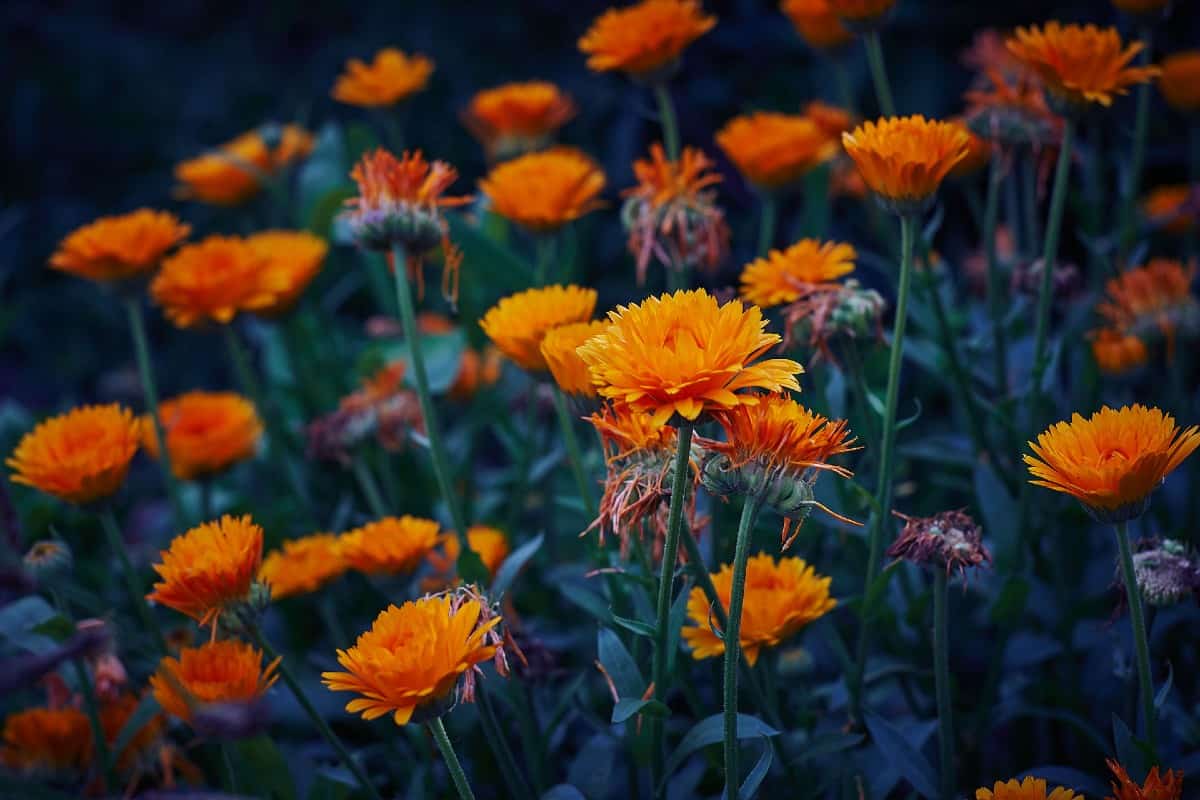
Gardeners often treat this short-lived perennial wildflower as an annual. It has daisy-like flowers between May and early fall. The petals tend to be yellow or orange but may be pink or cream.
The pot marigold’s leaves and flowers are edible but bitter. Sow calendula seeds inside six to eight weeks before the final frost, or sow them directly outdoors just before the last frost. This wildflower thrives in full sun or partial shade in hotter regions.
Place it in average-quality, fast-draining, slightly acidic to neutral soil rich in organic matter. Water the pot marigold frequently until it’s mature, then only occasionally. For low-fertility soil, add balanced, water-soluble fertilizer.
Snapdragon (Antirrhinum majus)
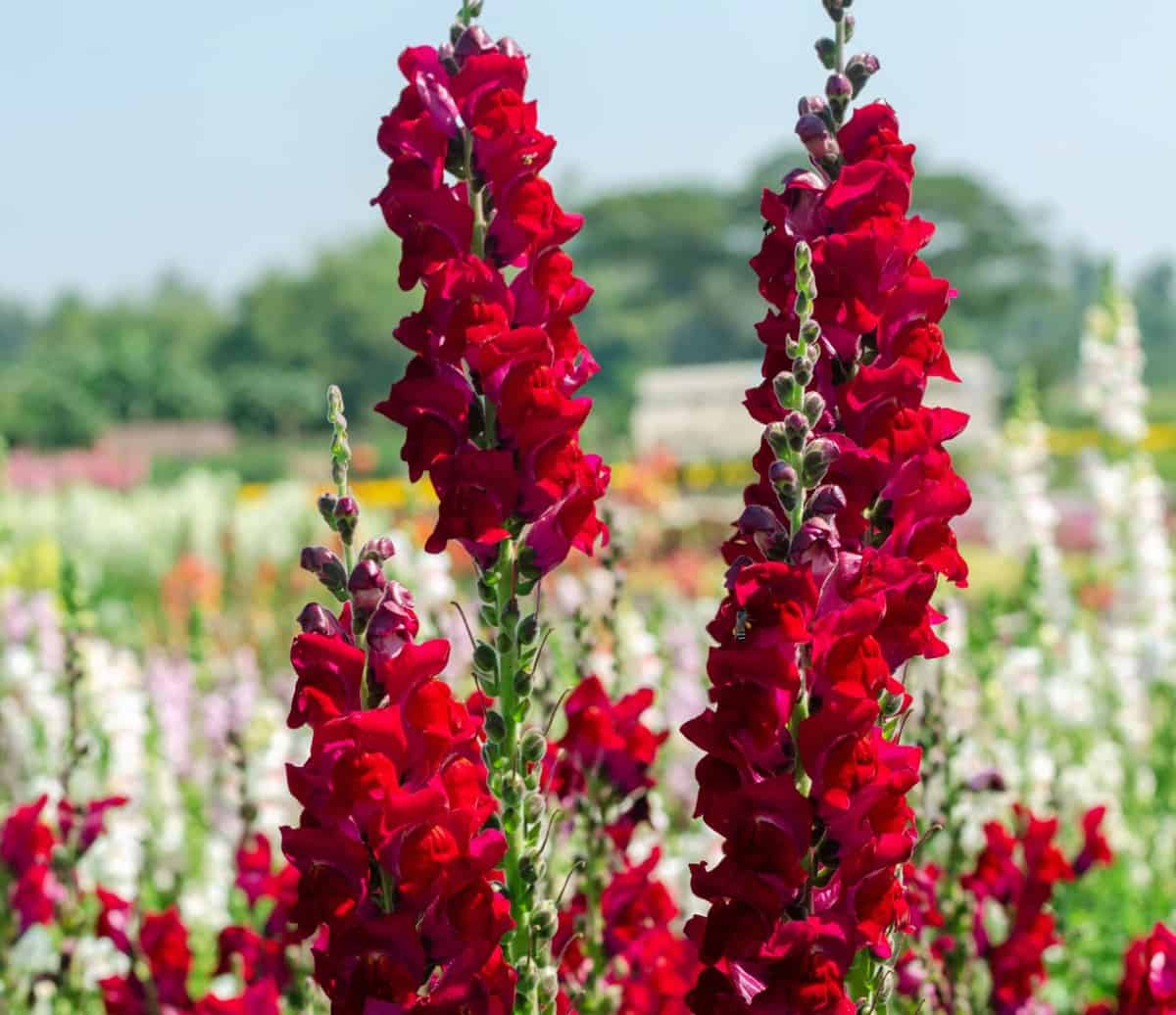
Gardeners often grow this tender perennial as an annual. Its stalks boast brightly colored blooms that complement subtler flowers. The snapdragon’s tightly closed flowers need the heavy bumblebee to act as their pollinator.
Start the seeds indoors under plant lights eight to ten weeks before the last frost, or sow them outdoors before the last frost or in late fall. Raise it in full to partial sun, and well-drained, fertile, moist, neutral soil with organic matter added.
Water the soil regularly for the first few weeks, then give one inch of water per week if there’s no rain. Apply balanced all-purpose fertilizer during flowering. Distribute pine straw mulch.
Blue Gilia (Gilia capitata) – A Globular Annual Wildflower
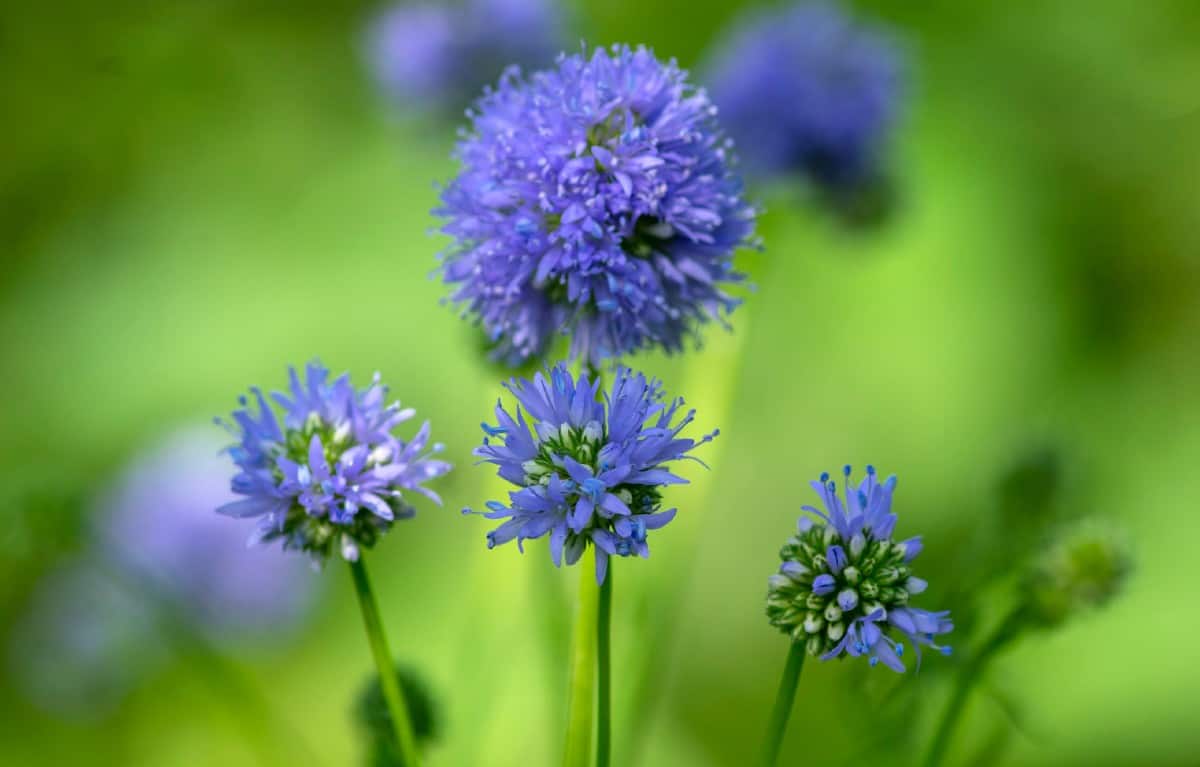
This pretty wildflower has lacy green leaves and clusters of small, pale-blue to bright-lavender flowers. The blooms appear between April and July or August and attract several types of wildlife. They are popular annual flowers for hummingbirds.
Sow gilia seeds in late fall or spring. This California native thrives in full sun and soil that drains well. Water it during dry spells.
Fertilizer is not necessary. However, mulch the plant with compost in the winter. The gilia is likely to release seeds for the next growing season.
Lupine (Lupinus)
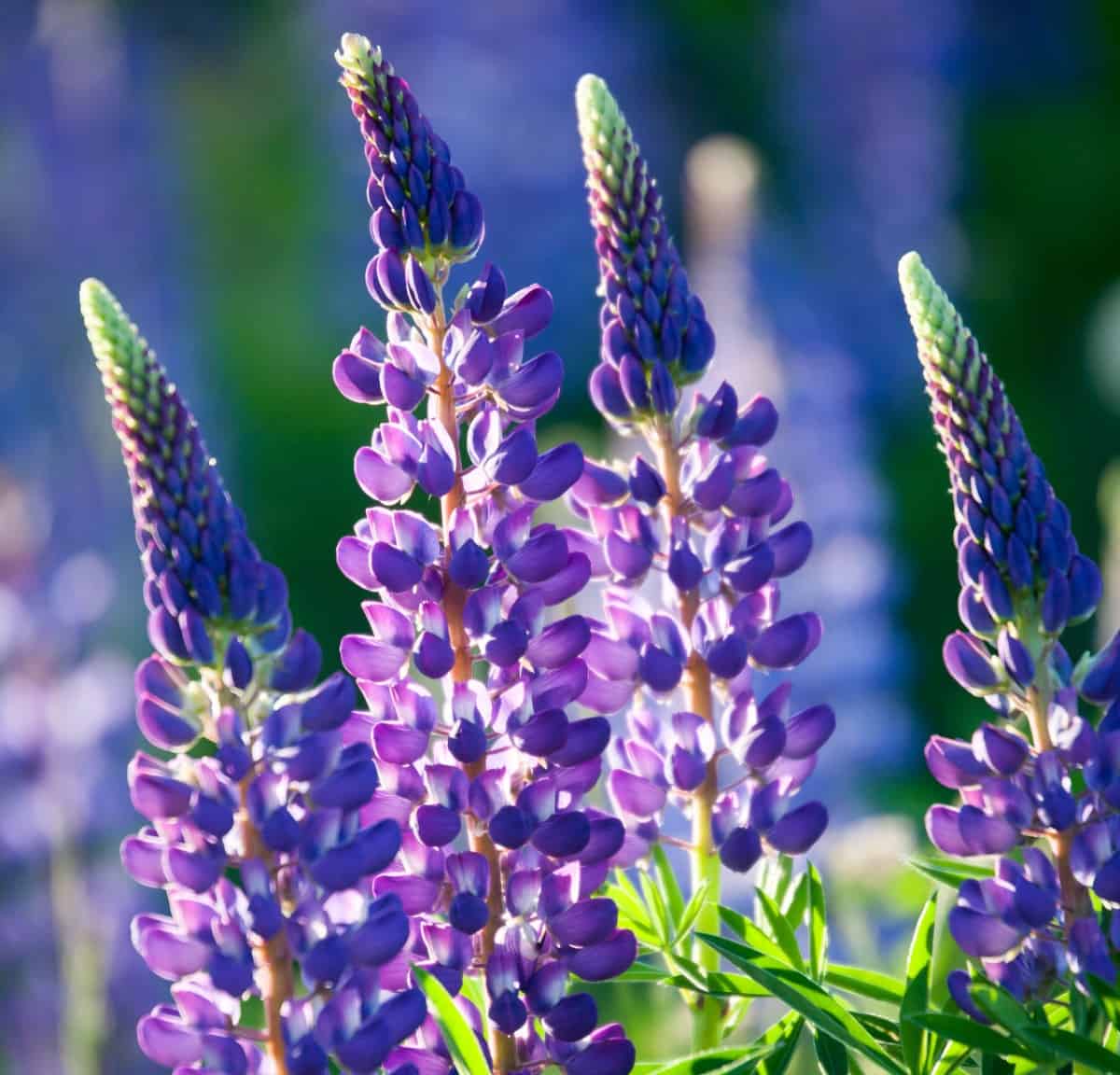
This flower has both annual and perennial varieties. From June to July, its spikes bear pea-like florets in white, red, lilac, and more. The plant also has handprint-shaped leaves.
The flower spikes make an excellent addition to a vase or flower arrangement. Note that lupine may be poisonous. Put it in full to part sun and loose, lime-free, average-quality soil.
Sow its seeds indoors six to eight weeks before the last frost or directly outdoors once there’s no frost risk. Spread a mulch layer. Apply all-purpose fertilizer monthly before it blooms. Keep the soil moist, watering once or twice a week during dry spells.
Larkspur (Consolida ajacis)
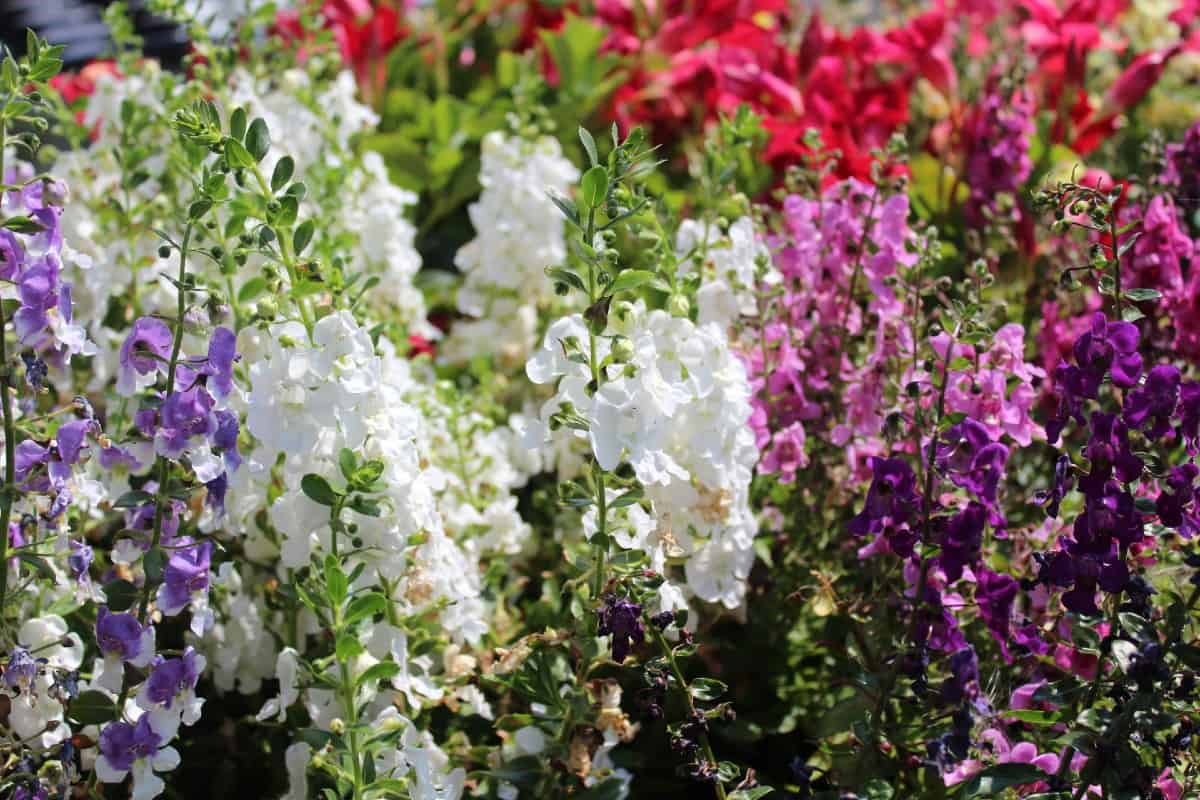
In early spring, this hardy annual’s tall stalks bear flowers that are often, but not necessarily, blue. Grow a mass of larkspurs, or mix them with other annuals or perennials.
Larkspur seeds need a cold period before germinating. Place them in the fridge for two weeks before planting them outside far enough ahead of the fall frost that the plants can put down roots. The site should have full sun and well-draining soil.
Stake young plants and water larkspur occasionally during droughts. Feed an all-purpose fertilizer monthly until blooming starts.
Garden Cosmos (Cosmos bipinnatus) – A Cheerful Annual Wildflower
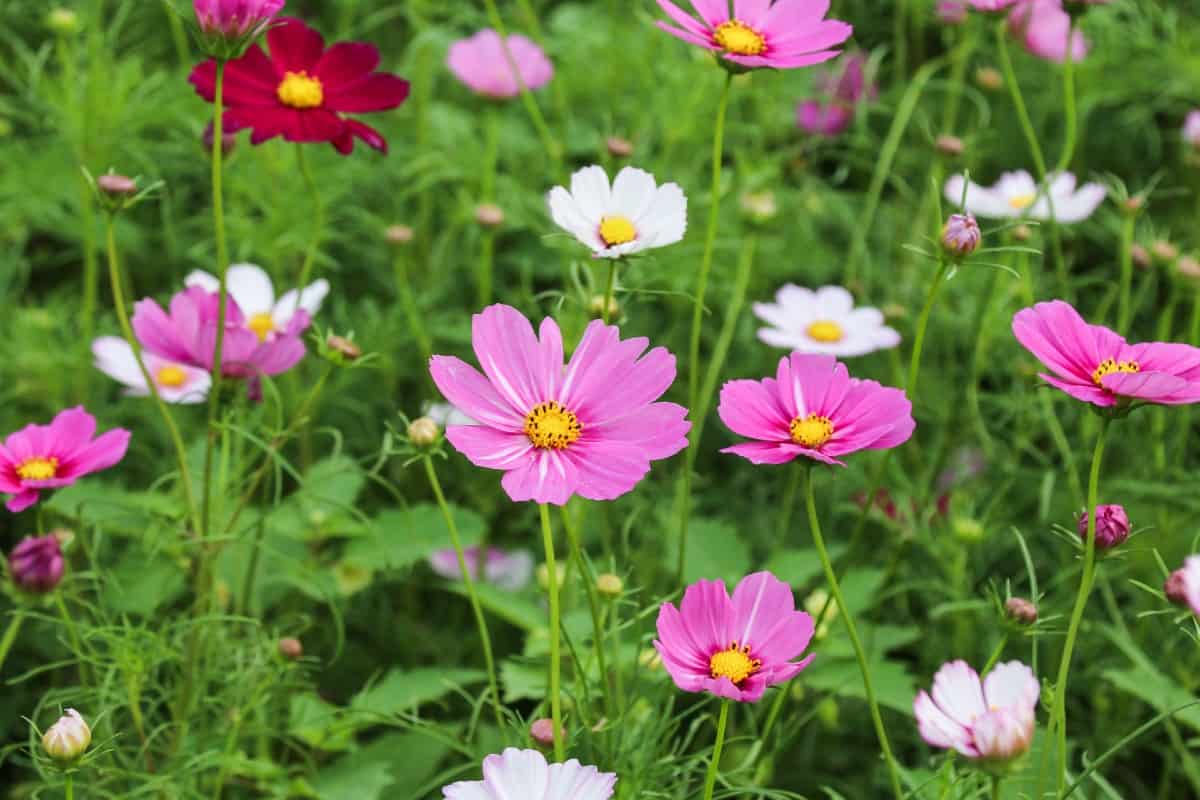
On its slender stems, this hardy annual boasts bipinnate leaves and daisy-like flowers. The white, pink, red, or orange blooms last from summer through fall. Cosmos excels as border or edging plants or in flower beds.
Start cosmos seeds indoors four to six weeks before the last frost, or sow them directly outside once there’s no frost risk. Cosmos does best in heat and full sun but tolerates part shade.
They prefer medium-moist, fast-draining, slightly acidic to neutral soil that’s not too rich. Water this wildflower in a prolonged drought, and only fertilize it if it’s struggling.
Black-Eyed Susan (Rudbeckia hirta)
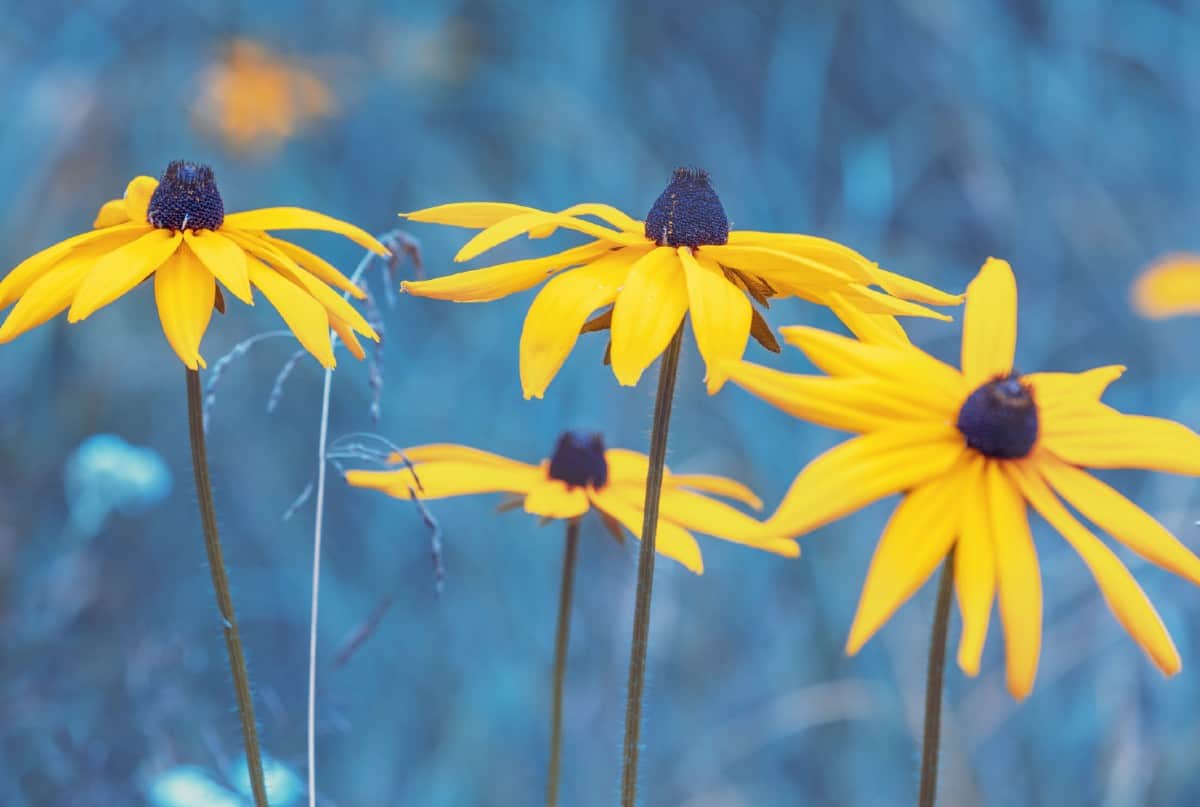
This wildflower offers both annual and perennial varieties. It bears hairy leaves and bright-yellow summertime flowers with a dark seed head. The black-eyed Susan pairs well with other jewel-toned flowers.
Sow Rudbeckia seeds indoors six to eight weeks before the last frost. The site should have moist to dry, well-drained soil with temperatures above 60℉ and, ideally, full sun.
Water your plant well during its first year, and then it’s drought-tolerant. Set up a side dressing of compost and deadhead the plant regularly.
Clarkia (Clarkia)
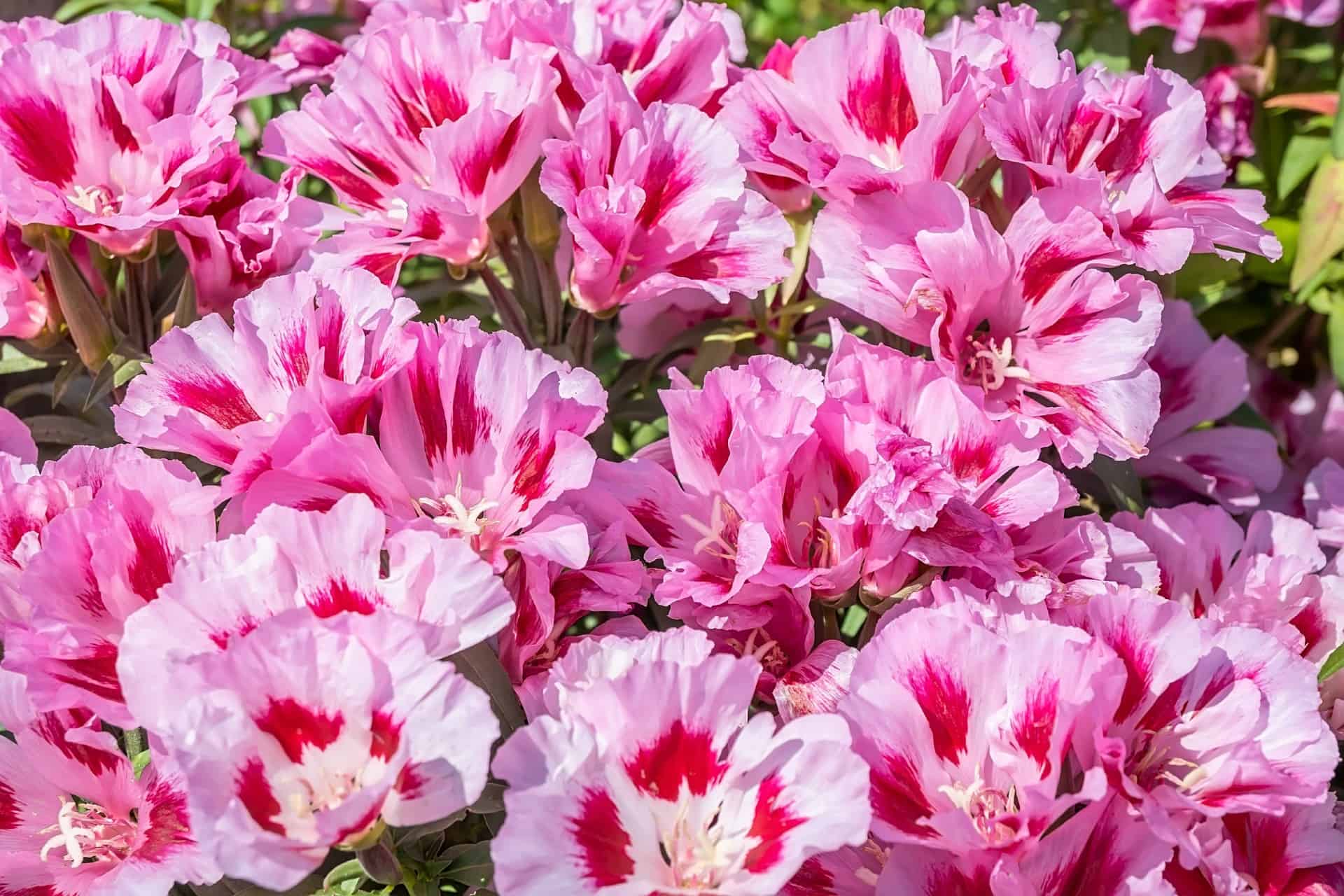
This annual boasts double or semi-double crepe-like petals in a range of colors. It blooms in summer or fall, and sometimes even during the winter in mild climates.
Sow clarkia seeds in the fall in warm regions or, otherwise, early spring. If you like, start the seeds indoors in peat pots four to six weeks before the last frost.
Clarkia looks lovely in a cottage or cutting garden, mass planting, wildflower meadow, border, or container. It prefers full or partial sun and soil that drains well.
Place several of these weak-stemmed plants close together to support each other. Water your clarkia regularly until it’s gotten settled, then it tolerates drought. Fertilizer is not necessary.
Wildflowers offer incredible diversity for a garden. Concentrating on annuals does not impose any form of limitation. Low-maintenance flower spikes, globes, and daisy-like blooms are available in nearly every color imaginable.
Unlike some other species, planting wildflowers involves seeding prepared soil. Read up on the necessary steps, then choose your favorite annuals for a wildflower mix.
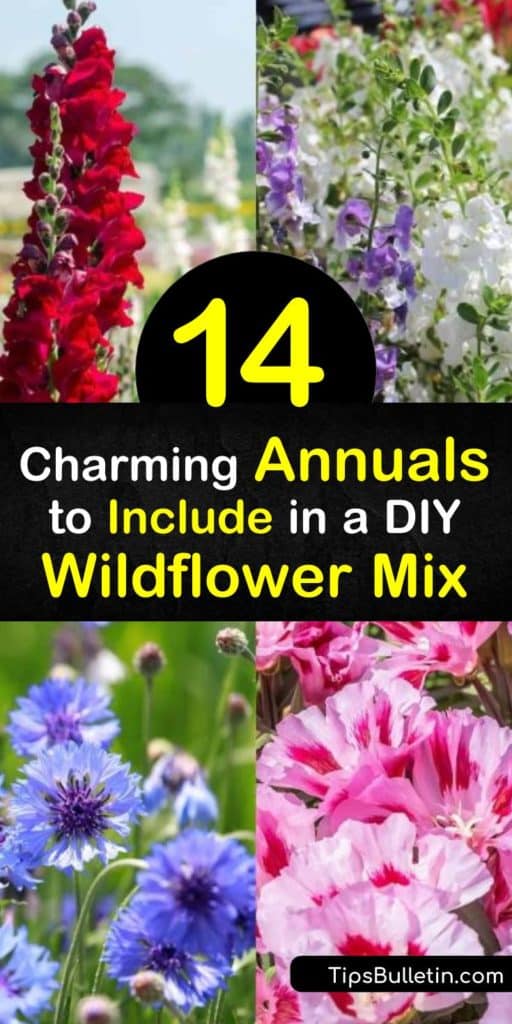
If you found these annual plant suggestions helpful, please share these wildflower garden tips with your friends on Pinterest and Facebook.